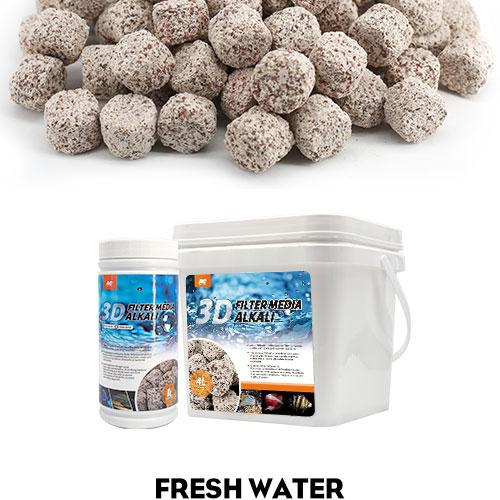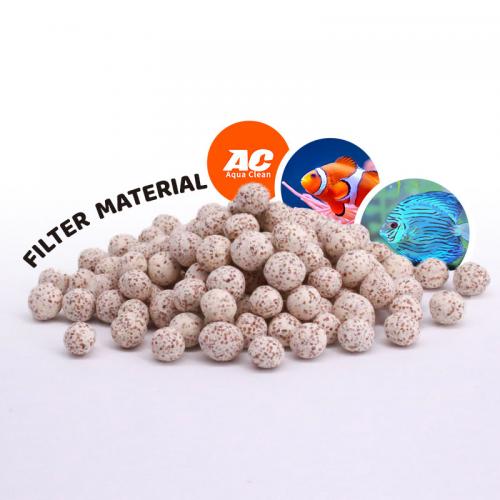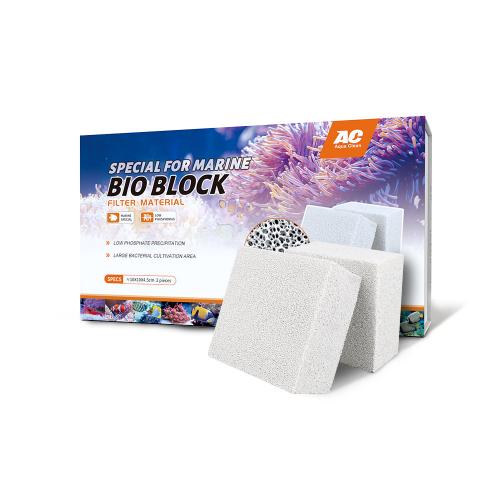From “Milky Haze” to “Air-Clear” in Minutes—Meet AC’s Filter Cotton A+B, the Ultimate Mechanical Filter for Pristine Aquarium Water
Update time: 25-10-31 Views: 125
Every aquarist knows the frustration: the tank looked perfect yesterday, but today it’s a foggy mess. In fact, 90 % of “milk-cloud” incidents can be traced to one weak link—mechanical filtration. Suspended particles smaller than 20 µm slip through cheap sponge, smother bio-media, crash the nitrifying colony, and the water turns opaque overnight.
AC AquaClean’s high-speed camera tells the story. In a 300 L reef tank, 30 minutes after feeding coral pellets, a generic pad still showed thousands of 10–30 µm particles drifting. The identical system fitted with AC Filter Cotton A+B recorded a 92 % drop in particle density and restored mirror-like clarity in just six minutes. That’s the power of “1+1”.
100 % Natural Fiber, 0 % Optical Brightener
Many pads look snow-white because they’re laced with fluorescent whitening agents—chemicals that slowly leach aromatic amines, proven teratogens for shrimp and corals. AC insists on virgin, renewable plant fibre, no recycled content, zero optical brighteners. 96 acute-toxicity tests by TÜV SÜD all read “ND”, so even the most sensitive Altum angels or Caridina shrimp breed without risk.
1+1 ≠ 2, It’s “Precision + Coarse” Synergy
Stacking a coarse sheet on top of a fine one often wastes 70 % surface area as water always seeks the path of least resistance. AC fuses an 80 µm pre-filter layer and an 8 µm polishing layer into one 3-D lattice. A 0.8 mm pressure-equalising void between the two guarantees edge-to-edge flow. Result: the entire sponge ages uniformly, extending service life by 1.8× compared with conventional dual-sheet pads.
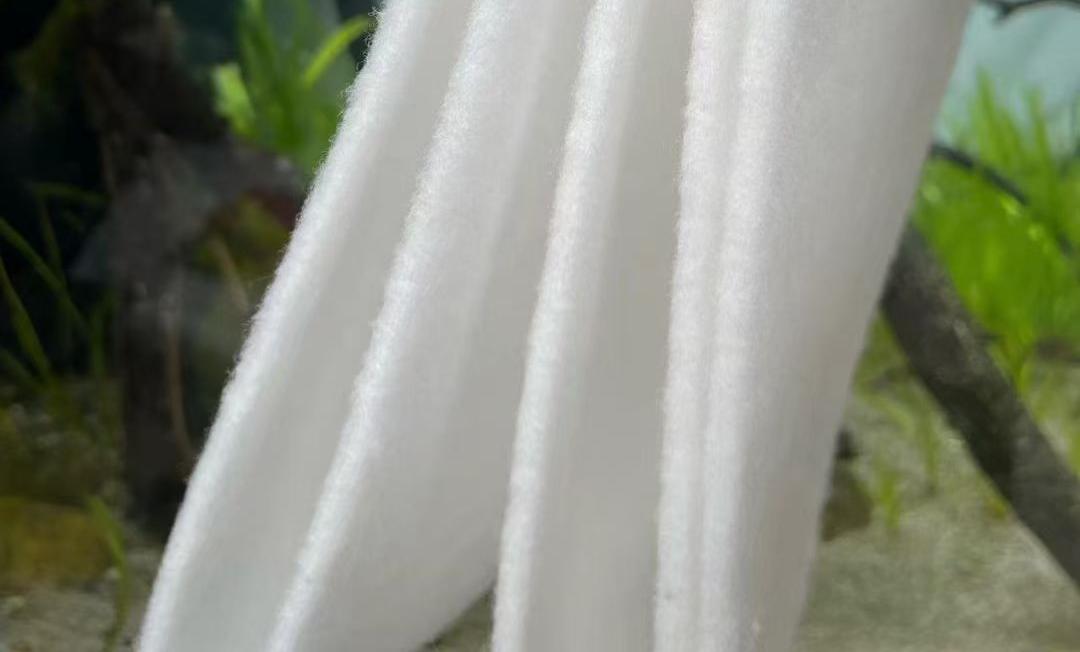
Hydrophobic Surface Modification—Clogging Delayed
Protein films love to coat sponge strands, choking flow and causing overflow nightmares. Borrowing lotus-leaf architecture, AC boosts the contact angle to 132°. In continuous-feed trials, standard pads showed significant overflow on day 7; AC 1+1 pads still delivered 81 % of initial flow on day 18. Weekend travellers can finally enjoy a “clean once, forget for half a month” routine.
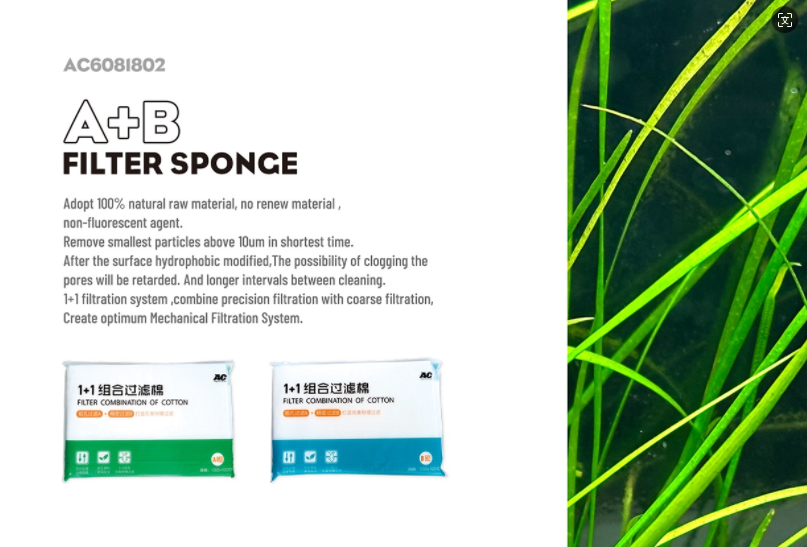
Real-World Set-ups: From 30 cm Nano to 1 t Reef
1. 30 cm Dutch Scape
Hobbyist Awei folded two AC611M100-P (30 × 30 cm) inside an external canister. Post-trimming debris is trapped instantly, TDS fluctuation <3 ppm, eliminating the typical “trim day = algae bloom” curse.
2. 90 cm Malawi Show Tank
Breeder Lao Ma feeds 2 kg frozen river shrimp daily to 20 Frontosa. Swapping to six sheets of AC612M100-P (50 × 50 cm) in a drip tower stretched water-change intervals to 7 days while keeping NO₃⁻ below 20 mg L⁻¹ and fish colouration vibrant.
3. 1 tonne Public Reef
Beijing aquarium maintenance crew cut AC610M35-P honeycomb mats into 20 × 20 cm blocks, placing them post-protein skimmer. Particle counts dropped from 18 000 to 1 200 cells mL⁻¹; halide penetration improved 37 %, and coral polyps stayed fully extended.
Quick Tips
- Trimming: kitchen scissors work fine—no fraying. Oversize the pad by 1 cm to prevent bypass.
- Cleaning: rinse in tank-temperature water, gentle squeezing only; a light brown bio-film can remain—it re-seeds bacteria.
- Replacement: when flow drops >30 %, typically 4–6 weeks. Low-bio-load tanks can stretch to 8 weeks.
Good water is the only shortcut to great fish and thriving corals. With AC Filter Cotton A+B, mechanical filtration becomes simple, swift and sustainable. Next time you admire an “air-clear” aquarium, remember the quiet green sheet in the filter chamber—turning natural fibre into crystal-clear joy.



